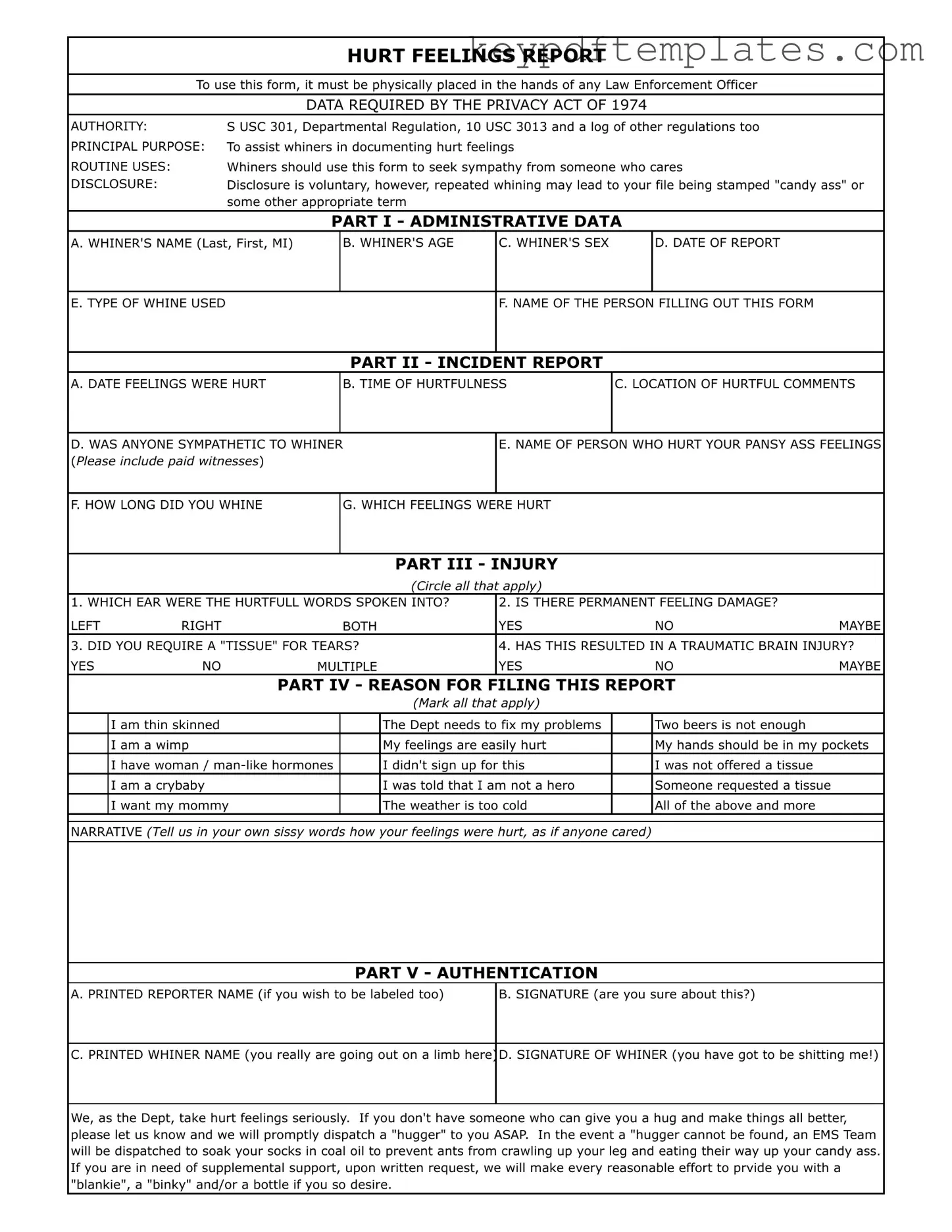Get Hurt Feelings Report Form
The Hurt Feelings Report form is a lighthearted way for individuals to express and document their emotional discomfort. Designed for those seeking sympathy, this form provides a structured approach to sharing feelings of hurt. While it may seem humorous, it highlights the importance of emotional well-being and the need for support in difficult times.
Modify Document Online
